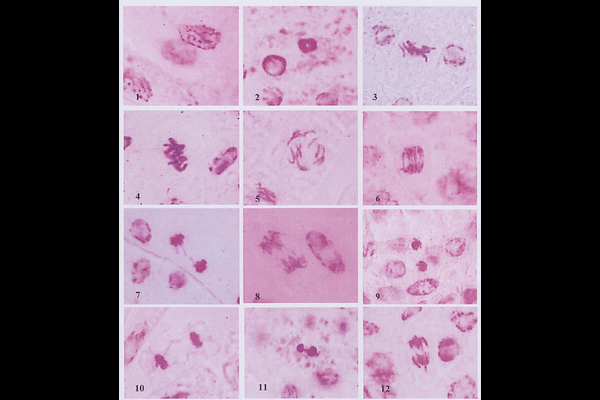Effects of Maleic Hydrazide on Germination, Radicle Growth and Mitotic Division of Trigonella foenum-graecum L. and Allium cepa L.

Effects of Maleic Hydrazide on Germination, Radicle Growth and Mitotic Division of Trigonella foenum-graecum L. and Allium cepa L.
Mousa, M. A.; A. A., E.-G.
AbstractThe effects of different treatments with maleic hydrazide which is an herbicide (growth retardant) on the cytology and growth of Trigonella foenum-graecum (fenugreek) and Allium cepa (onion) were investigated. Six concentrations of maleic hydrazide ranging from 5 to 55 ppm were applied for 6, 12, 18, 24, 36 and 48h. The treatments reduced the germination percentages of Trigonella foenum-graecum and Allium cepa and inhibited the root growth of both plants. Concentrations higher 50 ppm for 48h were toxic for both plants. Analysis of Variance (ANOVA) showed that there was significant difference (P < 0.05 and P < 0.01) in the mean root length of both plants exposed to different concentrations of the maleic hydrazide. This indicated that the root growth inhibition was concentration dependent. The non-lethal of MH showed an inhibitory effect on cell division in root tips of both plants and caused a decrease in their mitotic index values. The reduction in MI in root tips of Allium cepa was more evident than that of Trigonella foenum-graecum. All treatments changed the frequency of mitotic phases as compared with the control values. All the used concentrations of MH significantly induced a number of chromosomal aberrations in root tip cells of Trigonella foenum-graecum and Allium cepa. The total percentages of abnormalities in Allium cepa root tip cells were more than that in Trigonella foenum-graecum with all concentrations less than 45 ppm of MH. The most dominant types of observed abnormalities were stickiness, C-mitosis and distributed metaphase and anaphase. MH treatments produced a number of mitotic abnormalities in dividing cells in root tips of both plants resulting from its action on the spindle apparatus such as C-metaphases, lagging chromosomes and multipolar anaphases and telophases. Also, MH induced vacuolated nuclei and irregular prophases. The induction of chromosomal stickiness and chromosomal aberrations such as bridges indicates its action on the chromosome. This abnormality (chromosomal bridges at Ana-telophases) indicates true clastogenic potential of the chemical. It may be concluded that MH causes toxic effect on root tip cells of Trigonella foenum-graecum and Allium cepa and this toxicity induces different types of genic and chromosomal variations.